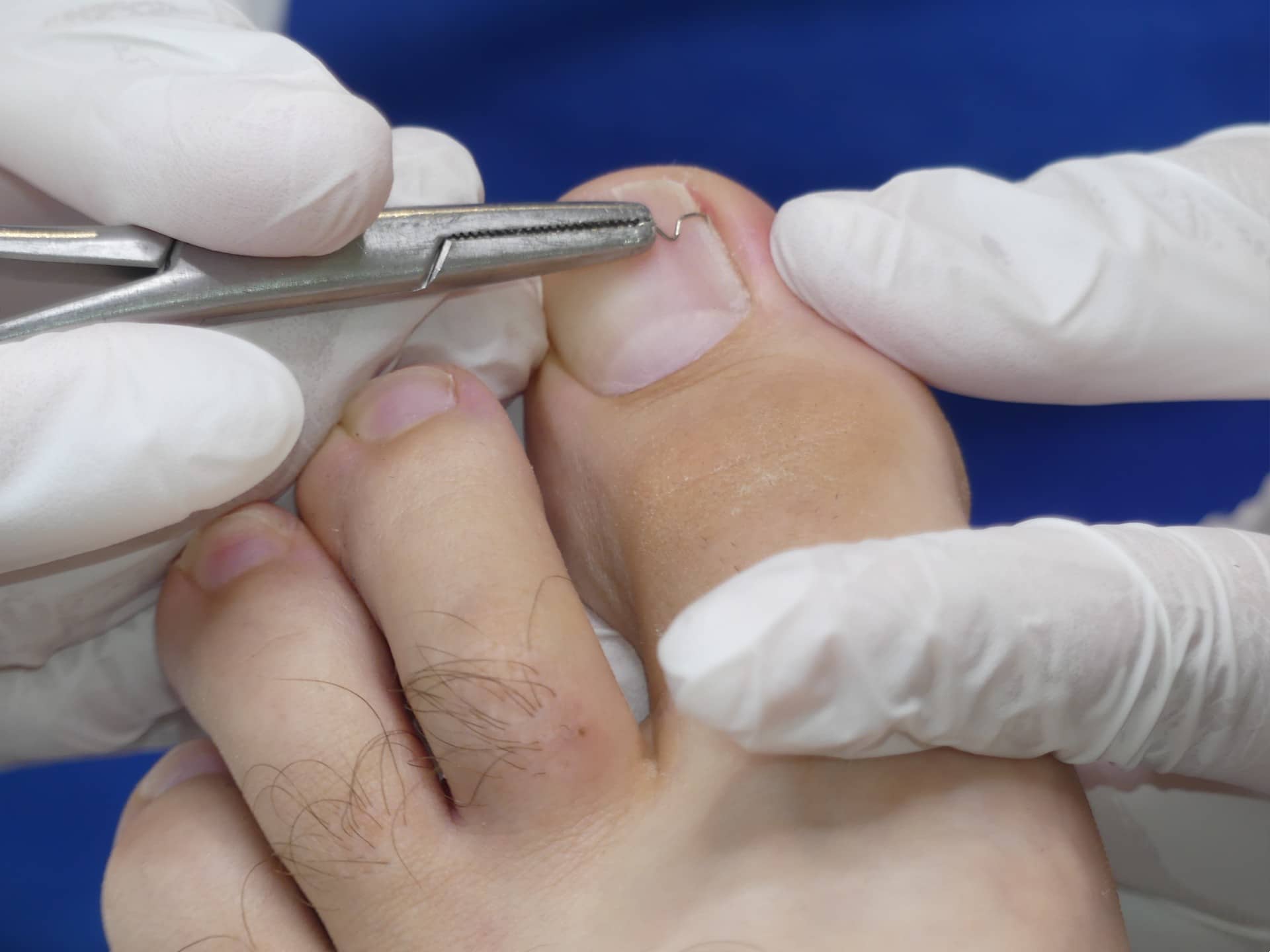How to Get Rid of Ingrown Toenails
A mild ingrown toenail once or twice in your life is certainly not unusual. Such cases can often be treated at home and become a distant memory just a few days later.
But that doesn’t mean every ingrown toenail should be regarded lightly. And if you have stumbled across this blog while searching for ways to get rid of ingrown toenails, you may well have a case that needs more attention!
The experts at Midwest Podiatry Centers are here to treat patients with ingrown toenails of any kind, so please don’t hesitate to call us if you have any concerns. No case is too small to be worth contacting us about!
And there are also times when calling us as soon as possible is strongly recommended.
When Should an Ingrown Toenail be Professionally Treated?
As we noted, many mild ingrown toenails may be treatable at home (and we will be discussing that further in just a little bit). There are definitely times, however, when you should leave the treatment to us instead.
Contact us immediately if:
- Your ingrown toenail is causing you too much pain. We guarantee you we can treat your toe in a less painful way and get you fast relief!
- Your toe shows signs of infection – severe pain, discharge of pus, red streaks radiating around the area, etc.
- You keep getting ingrown toenails regularly.
- You have diabetes, poor circulation, or any other condition that can increase your risk of your ingrown nails developing worse complications if not addressed properly.
If you have any concerns that are not listed above, don’t be afraid to contact us about them. We’d always rather our patients have peace of mind and make sure potential problems do not go unnoticed.

How to Treat an Ingrown Toenail at Home
If you believe you’re all right treating your ingrown toenail at home, the procedure for doing so is rather simple:
- Soak the affected foot in warm water for 15-20 minutes. Add some Epsom salt if you wish, but don’t add anything that causes you further pain or irritation.
- After soaking, gently pat the foot dry.
- Apply some antibacterial ointment and then bandage the toe.
Repeat this several times per day, and try to keep your toes from being constricted as much as possible in tight shoes during this time. Every time you soak again, replace the bandage with a new one.
Some sources say to wedge a piece of cotton or dental floss beneath the nail to help guide it away from the skin, but we rarely recommend doing so. It is easy for those materials to become caught beneath the nail and become a magnet for bacteria.
Give your toe 2-3 days to improve. If it doesn’t, or things worsen during that time, please call us.
When More Advanced Treatment is Needed
When an ingrown toenail requires a professional touch, we are more than happy to help.
In some cases, we may simply have to lift the edge of the nail away from the skin to allow it a better chance to heal. We can do this much more effectively and safely than you can do it at home.
In more severe cases, we might need to partially or completely remove the nail. This can be done through a simple in-office procedure after numbing the toe. We know patients can have hesitations about this procedure because their toe is already in pain, but we can assure you that the numbing makes it comfortable. Your toe will also feel much better than it did once the anesthetic wears off!
Now, if your problem is recurring cases of ingrown toenails, we will first discuss whether certain choices or behaviors are leading to them. These can include:
- Not trimming your toenails properly, leaving them too rounded or short.
- Wearing shoes that squeeze and compress your toes too much.
- Putting your toenails through repetitive trauma (e.g. black toenail for runners).
If addressing the above factors does not yield results, it may mean that your penchant for ingrown toenails is genetically inherited.
If that is the case, we might recommend a surgical toenail removal much like we described above. Once all or part of the toenail is removed, however, we will then treat the underlying nail bed to prevent new nail from growing back. In the case of a partial toenail removal, this will leave the nail slightly thinner than it was before on a permanent basis.
The idea of not having a toenail might feel disconcerting at first, but it should not cause any harm. You can still paint the area of the nail with non-toxic polish if you wish, but we highly recommend you do not try to adhere fake nails to the skin. That can easily lead to damage.
Take Care of Ingrown Toenails the Right Way
Whether it requires some simple treatment or more advanced intervention, we will always help patients find the relief they need from ingrown toenails – as well as help keep them from coming back!
If you are having problems with an ingrown toenail that home treatment hasn’t (or can’t) help, do not wait to contact us.
Call Midwest Podiatry Centers at (612) 788-8778 whenever you have any concerns about your foot or ankle health. With 9 offices throughout the Minneapolis area, we can get you into a location that’s close to home and fits your schedule best.
Do you prefer to reach out to us electronically instead? Then please fill out our online contact form (including your office preference) and a member of our staff will respond to you during our standard office hours.
